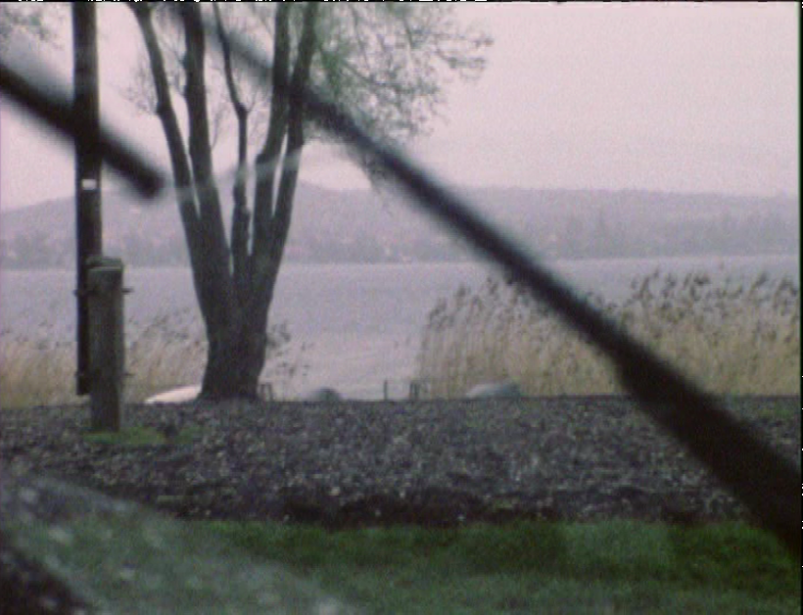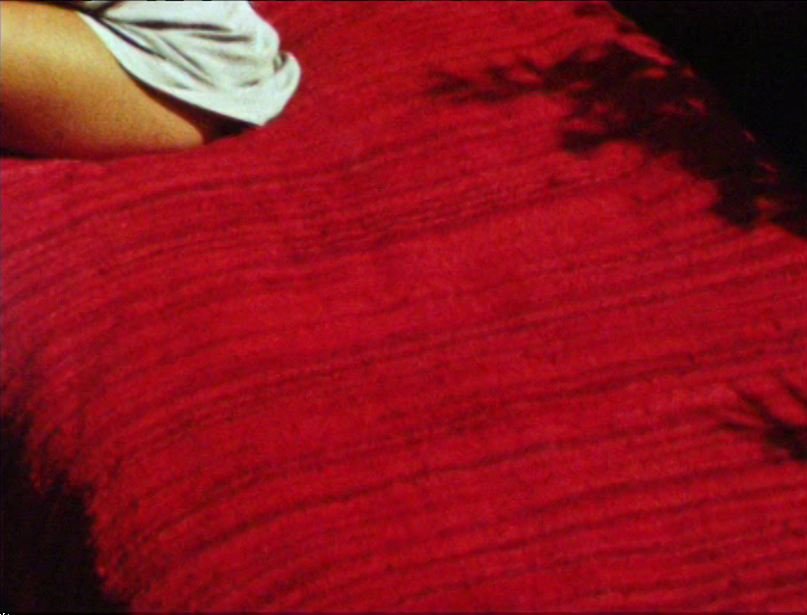
AUFZIEHENDER STURM © Milena Gierke
Berlin-based Milena Gierke’s Super 8 films exist within a small yet formidable tradition of experiential diary and portrait films that combine playfulness with innovative seriousness. She studied experimental film at Städelschule Frankfurt under the tutelage of Peter Kubelka before going on to study sculpture and film at the Cooper Union in New York City with Hans Haacke and Robert Breer, among others. In 2001, she joined Filmsamstag, a group of filmmakers and a critic, who, between 1997 and 2007, organized experimental film screenings and discussions at Filmkunsthaus Babylon in Berlin-Mitte.
16mm filmmaking is considered the de facto medium for formal innovation, while Super 8 is a medium for fooling around, a hypothesis surely challenged by the astonishing oeuvre of Helga Fanderl, John Porter, and Robert Huot—among others—who made hundreds of Super 8 films, using it as a tool, as George Kuchar once said, “of defense in this society of mechanized corruption.”
Super 8 messes up montage when done via conventional editing since the cuts remain visible and it is durationally constrained: a 50-foot roll of Super 8 shot at 18fps lasts only about 3 and a half minutes. Circumventing these constraints, Gierke employs in-camera editing for shots that last a few seconds at their longest. The order of the shots while filming is retained in the finished film. In-camera editing allows for real time composition, as one experiences and parses unfolding events, it is a key component of Gierke’s filmmaking. The limitations of Super 8 are counterbalanced by the camera’s light weight and the film’s cost-friendliness. Gierke rarely uses sound in her films, and never in an illustrative manner in relation to the image. Most of them are silent. She has often projected her own films where the whirring sound of the Super 8 projector suffices for aural accompaniment.
Gierke’s films can be loosely categorized into study/observational—where the camera is oriented away from the self—and diaries—where a certain kind of self-expression is evident. In the former, the self is only asserted through compositional choices from behind the camera, while in the latter, that assertion is more explicit, either through direct personal presence or via depiction of people, places and situations to which the filmmaker’s proximity is evident. In both cases, Gierke’s concerns are perceptual (as opposed to conceptual, a useful distinction made by art critic Lucy R. Lippard) and materially bound. Both spatial and temporal dimensions of perception through frame adjustments, variational shot duration, and time lapse are explored.

KRÖTEN © Milena Gierke
Kröten (1997, 6’) is a short portrait film of toads wandering and mating in a water stream in southern France. It is no usual portrait though, as the camera’s access to the body of a toad is mediated by the water, activating a series of perceptual games related to the independent motions of the toad, the water, and the camera. The interactions between these movements initiate an interplay between representation and abstraction. The depth of the visual field is made aware by dragonflies and floating leaves on the surface of the water, or small fishes swimming just below it. Light reflection on water creates illusionary sensations like the perceived back and forth motion of the toad while in actuality it is standing still. When a mating is filmed, the appearance of two intertwined bodies is not initially obvious, it only becomes apparent when the camera re-frames. Using a membrane to filter vision is not unique to Kröten. In Membran (2000, 3’), a plastic wrapping on a balcony window in Berlin arbitrates the view of a street during summertime, revealing the silhouettes of the vehicles and people passing through. The slight breeze controls the visibility of the street until the framing is readjusted to describe the entirety of the scene that was only disclosed partially until then. In Wasserspiel I (1997, 2’), reflections and shadow plays reign, collapsing disparate spaces onto each other, the surface of the water becoming a canvas that softens and disperses reality. In Aufziehender Sturm (1994, 3.5’), a car’s windscreen (made apparent by its wiper, a few seconds into the film) filters our sight from the stormy landscape on the other side of it while in Entgegen (1993, 3’), a mirror in a train toilet splits the screen and doubles the image of the half-raised window framing the outside world racing through. Here, fragmentation, framing and responsiveness to light conditions drive Gierke’s perceptual concerns. Often she uses a shot to allow a full description of the field of vision. In the chromatically expressive Volver (2009, 7’), we encounter a sunbathing female body in fragments where gestures, pose, and movements are isolated by a careful differential of proximity and distance to the camera.

VOLVER © Milena Gierke
The other key interest for Gierke is time, or more precisely, the constructed and manipulated nature of filmic time–a topic central to philosophical interest in film as a time-based medium. Zeit (1991, 9’), shot in time-lapse, one frame exposed every 8 seconds, mechanically compresses real time, accelerating the rate at which events unfold. The time markers within the frame are a wall calendar, a clock, and a variety of movements–a running television, sunlight passing through the room, a withering vase of gladiolas, and a flickering candle burning out, its flame reflected on the TV screen and the glass of the adjacent aquarium at night, which during the day, visibly confines the movements of the three goldfishes. This eventful space is further enforced by a table on the left-hand side of the frame, where Gierke is sometimes eating, reading or looking at photographs. The temporal unwinding of the events vary in scale, for example the withering of gladiolas occurs at a much slower pace than the movements of the clock hands. The film has two exceptions to the time-lapse sequences–the depiction of an ill fish in the aquarium and a shot of the entire room, perhaps included to further contrast real and filmic time.
Gierke’s self-portraiture in Zeit finds resonance in Stündlich I (1991, 6.5’) where she filmed her face looking at the camera in different surroundings every hour for a period of 3 months, interspersed with black film to account for the sleeping hours. The facial expressions vary and so do the length of each shot, sometimes the look is passive while at other times Gierke is seen performing several actions such as brushing, walking, drying her hair or eating. The routine nature of the film simultaneously recalls poet Bernadette Mayer’s incantatory photography series, Memory (1972), and filmmaker Anne Charlotte Robertson’s therapeutic Five Year Diary (1982), both of which serve as an articulation of an artist’s negotiation with their surroundings.
Milena Gierke is the artist in focus at Fracto Experimental Film Encounter, November 23-26, Berlin.
Featured Image: MEMBRAN © Milena Gierke